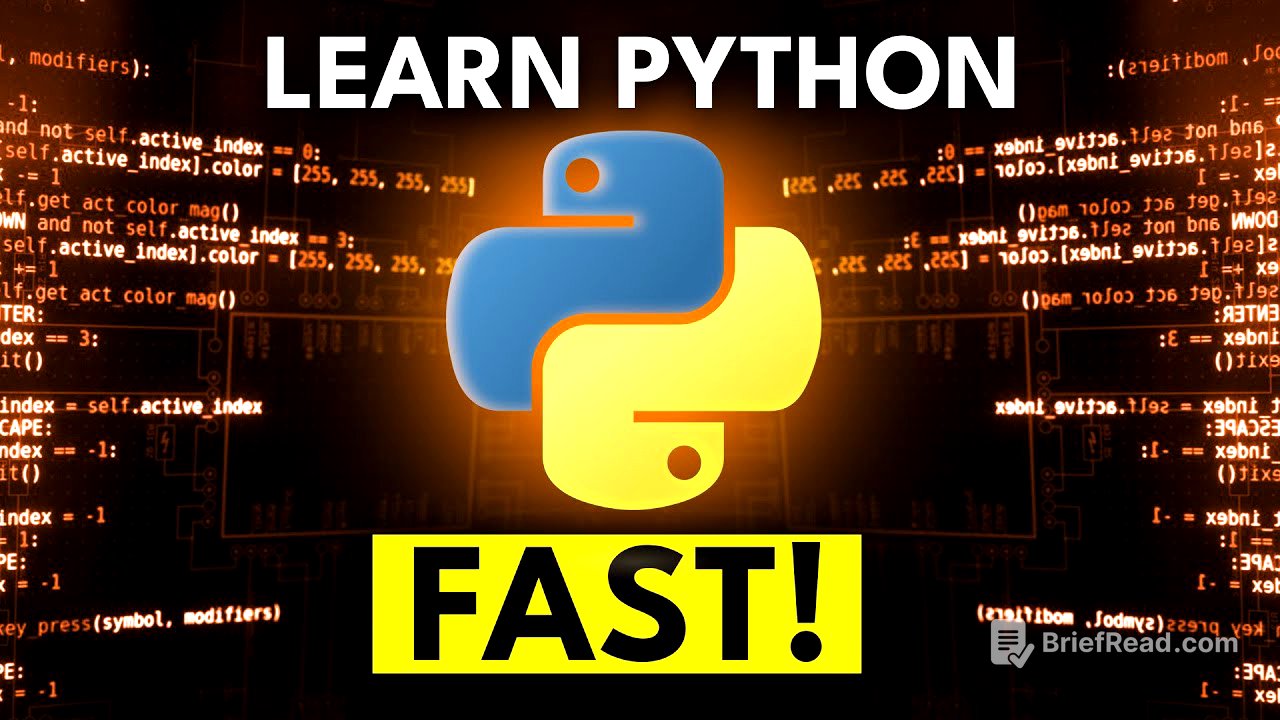TLDR;
This video provides a strategy for efficiently learning Python, emphasizing practical application over passive learning. It outlines five key steps: mastering the basics quickly, engaging in interactive learning, picking a niche and completing projects, becoming "Pythonic" by learning advanced features, and consistently building and deploying projects. The core message is to spend more time coding than watching tutorials and to focus on completing projects to solidify skills and build a portfolio.
- Master basics quickly
- Interactive learning is key
- Pick a niche and complete projects
- Learn advanced Python features
- Build and deploy projects consistently
Overview [0:00]
The video introduces a method for learning Python effectively, moving beyond the common trap of endless tutorials. While tutorials have value, the goal is to avoid getting stuck in "tutorial hell" and to develop a practical strategy for skill acquisition. The video will cover why Python is a valuable language to learn and then detail a step-by-step approach to learning it efficiently.
Why Python [0:20]
Python is a versatile language suitable for web development, AI, data science, and automation. It consistently ranks among the top three programming languages in terms of job demand, offering high average salaries for developers (around $100,000 in the United States). Python is also suitable for both professional and personal projects. The main issue is that many people get stuck watching videos without making real progress, and the video aims to address this problem. The key is to spend 20% of the time consuming content and 80% of the time writing code.
Step 1 [1:20]
The first step is to quickly master the basics of Python, aiming to spend no more than one to two weeks on this phase. Focus on essential concepts such as variables, data types, loops, functions, and basic object-oriented programming. Choose one resource, such as a short course on YouTube, a paid program like a Udemy course, or Python's official documentation. Videos are particularly useful for beginners because they break down information slowly and provide experienced insights. While learning, engage in mini-challenges alongside the tutorials, predict code outcomes, and experiment with the code to enhance learning.
Step 2 [2:48]
The second step involves interactive learning, dedicating a few weeks to developing skills through active engagement. The principle is to spend 20% of the time watching and 80% doing. Research indicates that passive learning through tutorials or articles results in only 20% information retention, whereas active learning through coding and project building can increase retention to 75-90%. DataCamp is recommended for its interactive platform that allows coding within their environment with instant feedback. DataCamp offers Python programming fundamentals track and associate Python developer track.
Step 3 [4:27]
The third step is to pick a niche and complete a project within that area. Common areas include web development (Django, Flask, FastAPI), game development (Pygame), data analysis (Pandas, NumPy), machine learning (TensorFlow, PyTorch), AI agents (Langchain, Langraph), automation scripts, and hardware projects (Raspberry Pi). When facing challenges, seek specific solutions rather than watching general tutorials. For example, if encountering authentication issues in Django, search for that specific problem. This approach fosters deeper learning and success. Choose a project that excites you and acquire the necessary skills to complete it.
Step 4 [6:24]
Step four involves becoming "Pythonic" by learning advanced features that make Python code elegant and efficient. This transition involves writing clean, efficient, and distinctly Python code. Key features to learn include list comprehensions, generator expressions, context managers (with statement), dictionary and set operations, decorators, and typings. These features differentiate beginners from intermediate developers and are essential for mastering Python.
Step 5 [8:00]
The fifth step is to consistently build and deploy projects. Many programmers plateau because they don't develop the habit of finishing projects. "Shipping" involves using version control (Git, GitHub), deploying web applications (Heroku, Railway, Render), creating sharable notebooks for data projects (Google Collab, Kaggle), packaging utilities with setup tools, and containerizing web services with Docker. Completing projects builds problem-solving skills, increases confidence, adds to your portfolio, and teaches you how to work through the mundane aspects of coding. A professionally completed project is more valuable than numerous unfinished tutorials.









